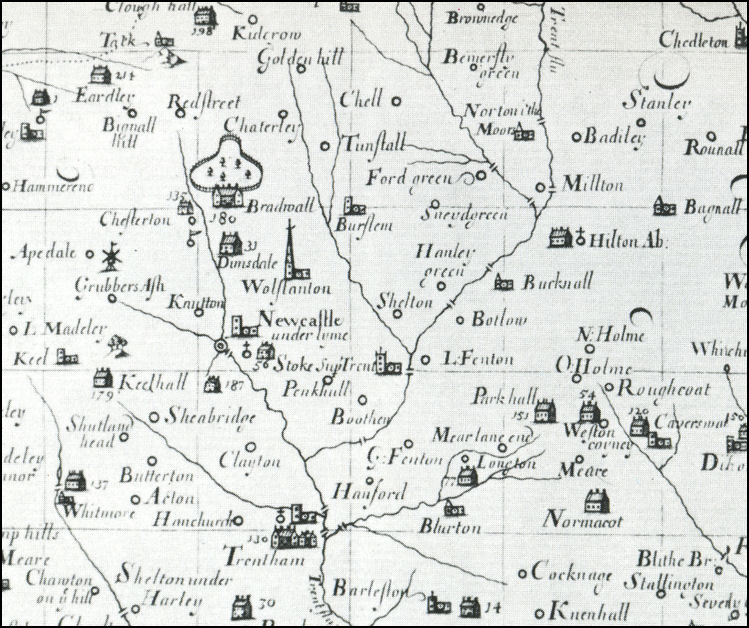![]()
|
|
|
|
|
Stoke-on-Trent - Potworks of the week |
Advert of the Week
Photo of the Week
early 17thC pottery klin

illustration of an early 17th
C pottery - from Dr. Plot's Natural History of Staffordshire (1686)
early ware was fired in simple kilns only a few feet in height as this
illustration shows.
on the table is the ware (presumably for sale) at the base of the wall appears
to be
some saggars. The worker on the right hand side is 'blunging' the liquid clay
in a pit
to remove the course grit and make the clay more workable.
|
Plot is known for looking for natural curiosities in several English counties, and for writing Natural History of Oxfordshire in which he described the fossilised femur of a giant (now known to be from the dinosaur Megalosaurus) and Natural History of Staffordshire, in which he describes a double sunset - visible on Midsummer's Day from the churchyard of Leek's Parish Church, St.Edward the Confessor |

Plot's map of North
Staffordshire - 1686
many of the Potteries towns and
villages are recorded on the map
| Dr. Plot in his natural
History of the county (published in 1686) mentions Burslem as being the
seat of the greatest Pottery then carried on in the county; but he does
not say, whether other neighbouring Potteries then existed, though he
speaks of tobacco-pipes being manufactured at Newcastle, and that three
sorts of clay were procured from between Shelton and Hanley Green"
Dr Plot gives the earliest account of the clays of the area starting with the brick clays between Newcastle and Keele ‘which when burnt became all over blue...
In Cobridge, between Burslem and Hanley, yellow clay two feet thick lay only seven feet below the surface with six feet of red marl immediately below that. (This in the vertical shaft of a coal mine). Stoneware clays and fireclays were also found within easy reach. The geological strata of North Staffordshire are unusual and, with vertical faulting and extensive outcropping, a very great variety of clays and coals were available on the surface to anyone who dug a little deeper than usual. Red marls were the basic clays used for most early pottery. They were glazed with lead, applied to the dry clay ware as powdered galena (lead sulphide) or ‘Smithum’. Lead provided the gloss, and iron or manganese provided the colour. The ‘pipe-clays’, or white burning clays, were not so abundant and were used more sparingly either to coat the face of an article before decoration - as in slip-trailed ware - or in small amounts as the decoration itself. Later, mugs and jugs had a thin coating of white slip over the dark clay to render them more attractive.
|